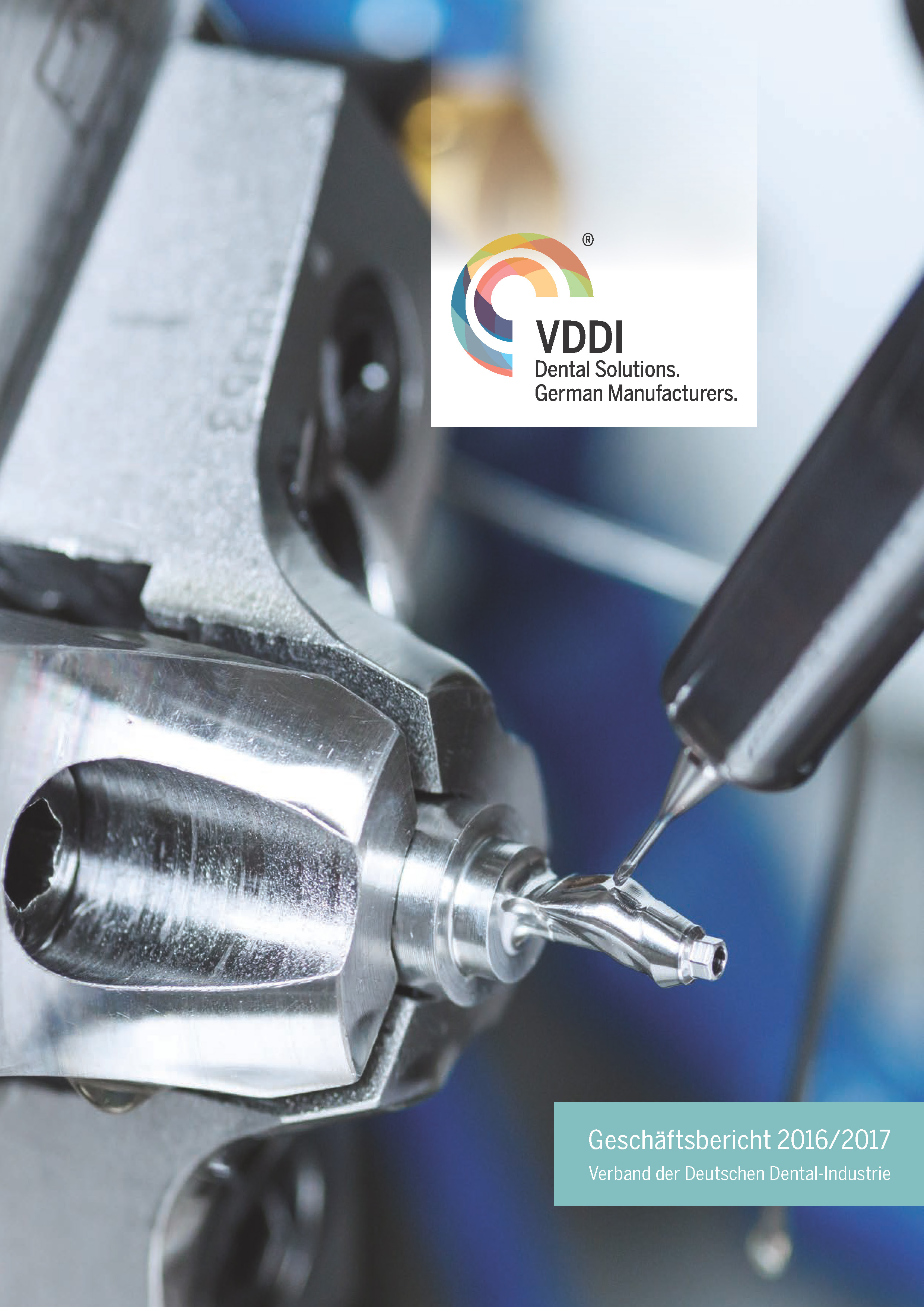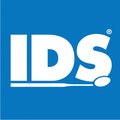Innovation fireworks for the practice and the laboratory: In the field of dentistry the opportunities of the current technologies are very concrete, very tangible as the International Dental Show 2017 (IDS) in Cologne demonstrated. In this way, the visitors experienced substantial enhancements to established digital workflows - from imaging techniques through to 3D printing. In addition, the exhibiting companies also presented innovations for traditional working methods in the laboratory and practice.
What form will the work worlds in the practices and the laboratories take on tomorrow and how can dentists and dental technicians seize the opportunities that are already visible today?
This specifically applies to the digital processes. In the field of implantology they have already significantly contributed towards exploiting the healing potential of the body to a maximum through optimised planning.
Implantology has long since been considered to be the flagship discipline for the implementation of digital technologies. How far these have pushed forward in the spectrum of dentistry is demonstrated in a field that some people initially considered to be rather difficult terrain: orthodontics. With virtual models for orthodontics, here not only diagnostic issues can be processed and a virtual set-up created, but also more and more often orthodontic appliances can be planned, such as for example fixed devices. Even the largest orthodontics challenge for the digital technique is increasingly coming under focus: removable devices such as stretching plates, activators, etc.
3D printing - which displays great future potential - is a production process that is already implemented in the orthodontics segment as well as in other disciplines. Alongside drilling templates, different splints, dental technology models, individual impression trays and plastic base casts for the metal cast will most probably depict the most frequent indications.
In general, speed plays an increasingly more important role in all sections of dentistry. For example, patients ideally want prosthetic treatment to be carried out in one session if possible or at least completed on the same day. Digital technologies make this possible more frequently than to-date.
Practice and laboratory riding at high speed The increased speed is achieved through pure chairside therapies or by accelerating the workflows across the entire process chain in the practice and laboratory, from A for activators to Z for zirconium oxide. Attractive optimisation options are arising now at all levels.
This begins with the digital moulding. At IDS a whole series of new intra-oral scanners enriched the existing offer. Some of them can simply be carried from one treatment room to the next, almost as conveniently and inconspicuously as a pen in the pocket of the dentist's coat. Beyond this connecting it to the tablet facilitates the patient communication. Other intra-oral scanners are consciously kept small to ensure high patient comfort and yet exploit the possibilities of voice and motion control.
A prosthetic restoration can subsequently be carried out in the practice more and more often. A milestone here is the production of bridges from the substance zirconium oxide, which enables the dentist to carry out more than just single-tooth restorations. Dentures that are printed out of plastic in the practice using the DLP method ("Digital Light Projection") are also almost within reach.
The process for the classic production in the dental laboratory is being accelerated enormously. At the same time, the communications are becoming more intensified, the dentist and the dental technician are moving closer together. The technology in the laboratory, for example a new dental microscope with a 3D mode is assisting here. Besides the quality control, it can be used for the direct exchange of digital images with the practice (screenshots, videos, split-screen function). Furthermore, it ensures a constantly relaxed, ergonomic posture.
But even the production steps themselves are becoming faster all the time. For instance, the guidance of instruments on curved shape tracks when processing glass and hybrid ceramics promises great time savings in comparison to the conventional milling or sanding techniques. And a fine structure feldspar ceramic infiltrated with polymer now offers an interior colour gradient with six layers in fine nuances - in a time-saving and convenient process for patient-friendly aesthetics. The general trend is moving towards the more frequent production of monolithic restorations.
Interesting new surface finishing materials are appearing here. The dental technician sprays a thin layer of a transparent version on sintered zirconium oxide restorations; the spray diffuses during the firing process in the surface where it bonds intensively - homogenously, non-porous and smooth after the first firing without additional polishing.
In addition to milling and sanding the possibilities of the printing techniques are expanding considerably. A wide range of splints, models, drilling templates, indirect bonding trays, in the near future temporary and permanent dentures - almost everything can be printed. Laboratory systems now offer even bigger building platforms and convenient remote maintenance for network-compatible models. Meanwhile the speed is picking up - just to get an idea of the magnitude: Seven splints in one hour are definitely possible today.
Innovative software even enables a combined additive/subtractive production: Where it comes down to the highest precision, the machine subsequently carries out an automatic milling process and thus creates overall a consistently high surface finish. Today, multi-material printers are perhaps visible on the horizon. For example, six plastics are mixed to make a new compound with the defined required properties - for instance with specific colouring or interior colour gradients for a patient-specific design.
As an alternative to own production, the laboratory can also outsource jobs to a central or industrial supplier. Models can be delivered within short lead-times, prompt service is offered using digital technology.
"Forward-planning in endodontics New digital technology is also available for endodontics: After planning tools initially established themselves in the field of implantology and more recently in the orthodontics segment, a root canal treatment can now also be simulated in advance, its complexity more accurately estimated and ultimately planned step by step. A 3D X-ray and innovative software form the basis here. This enables the dentist to follow the course of the canals on the monitor using dot markers through to the root tip. Subsequently he sees in (orthogonal) cuts (to the canal), at which points calcifications are present for example. He can also pre-test virtual filing. All of the information gained from the simulation is taken into account when carrying out the treatment or in the case of a general dentist, if necessary a referral to the specialist is provided.
Part thermally treated filing assists in safely and hygienically preparing even strongly curved canals. The stiffer material at the shaft increases the tactile control when navigating through the root canals, whereas the tip of the instrument is particularly flexible.
If a root pin is attached before the crown is restored, models made of a fibreglass reinforced composite make canal extensions superfluous. Because such a pin can be extended across the entire root channel, adapts to suit the natural anatomy and thus enables a substance-friendly treatment.
A gain through the combination: Microscopy & diagnostics
Because endodontics always involves particularly small structures, further developed OP microscopes also offer interesting opportunities here. These are even becoming increasingly interesting for other dentistry part disciplines thanks to current innovations. For example, an integrated fluorescence mode enhances one microscope which enables the intra-operative check for tooth decay during the substance removal. The newly designed interface allows one-handed control. The opportunities of such systems range from endodontics through to preserving dentistry, periodontology and implantology.
Different functionalities are growing together in a different area too. Small lamps combine a lamp for the hardening of dental materials with fluorescence diagnostics. Both bacterial activities such as the smallest leakages in the edges of fillings become visible. However, this is more and more frequently avoided from the onset, among other things thanks to a constant reduction in polymerisation shrinkage with current values down to just 0.85%.
The terminal tooth always presents a special problem in the filling therapy: The matrix cannot be wedged and after its removal disto-cervical surplus composites have to be laboriously filed away. The solution is a matrix that is produced in Germany in a completely manual process, which can be placed in one hand movement in four seconds and which automatically lies disto-cervically.
Target figure = primary stability If a tooth is no longer worth preserving despite today's endodontic and tooth preserving possibilities, implantology treatment is more and more frequently an option - which is now becoming even more interesting: New instruments with sharp working tips and a thin profile enable a tissue-saving extraction and thus often make elaborate bone augmentations superfluous.
New implant systems are appearing that considerably increase the primary stability through comprehensive further developments. Certain engines now dispose of a non-invasive stability measurement so that the optimal service life of an implant can accurately determined.
Fibre-reinforced composites are used as superstructure material to provide a "shock absorber" effect - which offers a plus in durability and biting feeling. Corresponding CAD/CAM blocks can be processed chairside and that in the meantime even without separate firing processes.
When fixing implant prosthetic constructions using locators (often an alternative to full dentures) a high pivoting capacity now allows divergences of up to 40 degrees between two implants. And thanks to a special holding mechanism the dentures can be extracted particularly easily using a hydraulic release system during the recall appointment.
If a conventional mucosa-supported full denture is chosen, cold curing resin with many of the material characteristics of heat curing polymer offer the dentist totally new possibilities. Such pink denture plastics are high impact, lie nicely on the gums of the patient and can nevertheless still be comfortably processed in the laboratory.
Step towards the practice and laboratory of tomorrow New super-sharp scalers, new tiny mini implants, new ceramics for press technology processing, new embedding materials - this list is ongoing. The industry heads the ranks in many areas with both analogous and digital innovations. During their tour around IDS in Cologne the dentists and dental technicians took advantage of this to collect ideas for their practice and laboratory of tomorrow, based on well-founded knowledge thanks to the comprehensive offer of the exhibitors.
About IDS
IDS (International Dental Show) takes place in Cologne every two years and is organised by the GFDI Gesellschaft zur Förderung der Dental-Industrie mbH, the commercial enterprise of the Association of German Dental Manufacturers (VDDI) and is staged by Koelnmesse GmbH, Cologne.
100 years of VDDI
The VDDI celebrated its 100th anniversary in 2016. It was founded as the Association of German Dental Manufacturers on 24 June 1916 and organised the first Dental Show in 1923. In 1928 the VDDF organised the first International Dental Show. Today, the VDDI has 200 member companies with 20,000 employees. The overall turnover is more than Euro 5 billion with an export share of 62 percent.
Note for editorial offices:
IDS Cologne photos are available in our image database on the Internet at
![]() www.ids-cologne.de
www.ids-cologne.de
Press information is available at:
![]() www.ids-cologne.de/pressinformation
www.ids-cologne.de/pressinformation
If you reprint this document, please send us a sample copy.




